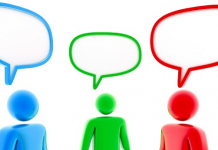Thanksgiving dinners, family gatherings, workplace events… these are all prime breeding grounds for awkwardness. Yet, many people treat discomfort as a personal flaw, believing they are simply “bad at socializing.” Philosopher Alexandra Plakias argues this is fundamentally wrong: awkwardness isn’t about people; it’s about situations. It arises when unspoken social rules break down, leaving us improvising without a clear script.
Plakias, author of Awkwardness: A Theory, discusses why these cringey moments deserve philosophical attention and how we can change our relationship with them. The core idea? Awkwardness isn’t a “you” problem; it’s an “us” problem.
The Illusion of the “Awkward Person”
People often label themselves as awkward, but this is a misdiagnosis. Awkwardness occurs when interactions lack clear social cues, roles, or scripts. Some individuals may struggle more with reading social signals, leading to misaligned expectations. Others might simply be self-conscious, overanalyzing every move. But neither explains why awkwardness happens.
The key is that blame can obscure the real issue: misaligned expectations between people. Instead of labeling someone as awkward, recognize that the situation itself is creating friction.
Fear and Belonging: The Roots of Discomfort
Awkwardness is tightly linked to uncertainty. You don’t know how others perceive you or which social script applies. This uncertainty ties into social anxiety, where people use “I’m awkward” as a disclaimer to lower expectations. However, the fear isn’t always about the awkwardness itself but creating awkwardness.
We avoid speaking up, intervening, or challenging wrongdoing because we fear disrupting social harmony. For example, post-#MeToo, some men admitted avoiding calling out harassment to prevent awkward confrontations. This demonstrates how discomfort can outweigh moral obligations. Ultimately, awkwardness is about belonging – the fear of being perceived as the one who “made it weird.”
Cringe vs. Awkwardness: Timing Matters
Cringe differs from awkwardness in one key way: timing. Awkwardness happens in the moment, when you’re scrambling to navigate an interaction. Cringe hits later, when you replay the scene and your body tightens in retrospective horror.
We associate the two because we often interpret awkwardness as shameful, believing it reveals our true selves. But if you reframe awkwardness as a product of the situation, not a personal flaw, the cringe lessens.
Common Triggers: The Everyday Awkward
Awkwardness manifests in countless ways: clogging a guest’s toilet, accidentally sending an embarrassing message to a group chat, or the dreaded hug-handshake hybrid. Even simple goodbyes at parties can be awkward, as you question whether to say goodbye at all, and if so, how.
Small talk is another major trigger. While it serves as a social tool, signaling civility, it becomes awkward when nonverbal cues are off – the other person is distracted, looking away, or standing too far.
The Cost of Avoiding Discomfort
Avoiding awkwardness comes at a cost. We lose genuine connection and shy away from important conversations. Grief is a stark example: many people avoid those who are mourning because they fear saying the wrong thing, leaving the bereaved isolated.
Reframing Awkwardness: A Path Forward
The goal shouldn’t be eliminating awkwardness entirely. Some uncertainty is healthy, forcing us to reflect before defaulting to harmful scripts. Instead, we should change how we relate to it.
Plakias suggests:
- Admit uncertainty openly: “I’m not sure what we usually do here. What do you prefer?”
- Clarify priorities: Know your goal before engaging in potentially awkward situations.
- Expose yourself gradually: The more you tolerate discomfort without catastrophizing, the less power it holds.
Awkwardness isn’t a sign of failure; it’s an unavoidable part of social life. Recognizing this can free us to navigate uncomfortable moments with more grace and authenticity.





















































